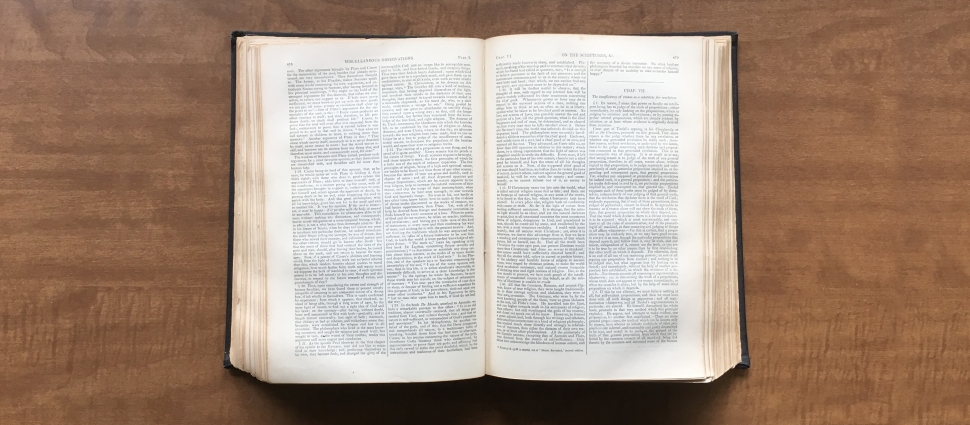Singing and Making Music

Paul Jones has performed an indispensable service for the church in the writing of his book Sing and Making Music. The chapters range from the highly practical to the more technical, but without losing the reader in the process.
Dr. Jones' musical credentials eminently qualify him to speak and write on the topic of his book. He is the organist and music director at Tenth Presbyterian Church in Philadelphia, where he has served since 1997. He holds an undergraduate degree in performance, composition, and Bible from Philadelphia Biblical University, a master's degree in piano performance, and a Doctor of Music degree in choral conducting from Indiana University.
The book is divided into four Parts ("Corporate Worship," "Hymnody and Psalmody," "Issues," and "Composers and Composition") containing thirty-one thought-provoking essays, a conclusion, and two appendices. The most striking aspect of the book as I read it was the irenic manner in which Jones conveyed truth to the reader. In a day and age when conflicts surrounding worship style abound, Jones presents us with a calm, steady voice that puts matters in clear perspective.
He also expresses a truly refreshing vision for home, church, and seminary with regard to music. Much of what passes for worship music today is little more than what I call Dr. Pepper music: 10-2-4. Two chords with four "bridges" sung ten times. In a very balanced manner Jones lays out the evidence and reason for the modern Church to return to biblical truth found in the traditional hymns and Psalms. This does not mean, however, that he is opposed to all contemporary music. Quite the opposite is the case, but he does call upon us to be more circumspect in judging the suitability of contemporary hymnody.
As one who would have been excluded by Martin Luther from the pastoral ministry ("Five hundred years ago, Martin Luther wrote, 'We shouldn't ordain young men to the ministry unless they are well schooled in music'" (p. xii).) I was eager to learn from Dr. Jones' book and learn I did! Practical matters such as why it is both necessary and helpful for Christian families to have hymnbooks in their homes are discussed in a manner that makes you want to go out and purchase hymnbooks for your family if you don't already have them. He stresses the importance of singing in Christian schools at all levels as preparation for the next generation to lead in the church.
Jones sets forth his thesis in these words: "Worship is more than an act in which we participate on Sundays; it is our very purpose for being.... Intentional worship should be a daily activity for the Christian, and a spirit of worship should encompass all we do." This leads into his first chapter entitled, "Sermon in Song: Sacred Music as Proclamation." Of particular note is Jones' section entitled "Proclamatory Hymns." Borrowing from Luther, he reminds us that much of the Christian life involves "saying" and "singing." As Luther wrote in his commentary on Psalm 118, "They [the righteous] praise only God's grace, works, words, and power as they are revealed to them in Christ. This is their sermon and song, their hymn of praise." (Emphasis mine.) Jones has captured an essential part of congregational life in this quotation that has been smoldered under weight of lousy contemporary music. Therefore, he makes a solid case for the incorporation of substantial music in our worship services as we strive to glorify God and not please men or be man-centered in our worship music.
There is also an impassioned plea for Trinitarian hymnody that enhances all of worship. Jones writes, "Since we can rightly consider the hymnal to be a collection of prayers and praise, it would be fitting for every Christian to own and utilize one or several.... Consider including the hymnal as an aid in your devotional life." In terms of corporate worship, "The texts should be biblically sound and meaningful. The music that accompanies a text should be excellent and should facilitate its comprehension." It is precisely this type of non-argumentative, clear writing that makes this book so helpful. Jones sets forth his case in an understandable manner. At the end of the day, however, you know exactly where he stands on matters concerning music. In addition, I found myself as a non-technical musician being able to follow his lines of thought easily.
One of the lost aspects of congregational teaching is with the young children. There is a variety of music that is suitable for children and both the church leadership as well as the parents should be concerned to teach the youth not only catechism but also music that is biblically correct. Here Jones touches on a much-neglected aspect of church life with the covenant children that the Lord has entrusted into our care.
The book is, simultaneously, a delightful combination of serious exposition and lighthearted humor. Chapter 5, for example, is entitled, "King David's Praise Team." What Jones accomplishes in this chapter, however, is a thoughtful explanation of the important place of music in the life of the Old Testament Church.
The dual issues of Calvin's view of instrumentation in the worship service as well as exclusive psalmody are also discussed. Clearly, Jones rejects Calvin's notion of no instrumentation in worship. He has a grasp of Calvin's reasons and is aware that for some, hymnody has no place in worship. Nevertheless, Jones contends that "Calvin's strictures were established for his own assembly, not for all churches." He also points out that one of Calvin's chief models for worship was Martin Bucer in Strasbourg. That being the case, it is noteworthy that "Bucer was a champion of hymnody who even prepared a hymnal himself (the Gesangbuch of 1541).
At the same time, Jones does not discount the invaluable, rightful place of the singing of the Psalms in the worship service. Even though current patterns of worship in modern evangelicalism point in a different direction, Jones believes that the singing of the Psalms is still an integral part of the Christian faith. Moreover, he adds that the singing of the Psalms really is not an optional part of worship, but rather central to it. This is a much-needed correction for the modern Church. It cuts against the grain of a great deal of what modern Christians think, being addicted to poor contemporary tunes, but evangelicals need to hear this and to wrestle with what Jones is saying.
Jones does not hesitate to tackle controversial, "holy house" issues such as, applause in the worship service (he's opposed), why every Christian should sing, should church musicians be paid, music in the small church, misconceptions about church music, what happened to hymns, and the criteria for good church music, just to mention a few. There is also, understandably, a chapter devoted to the hymnody of Jones' pastor and friend, Dr. James Montgomery Boice.
His chapter, "Luther and Bar Song: The Truth, Please!" exposed many misconceptions that are repeated in the modern Church regarding the etiology of Luther's hymnody. I'll elaborate for a moment. Apocryphal stories abound that somehow get impressed into service as truth. The various accounts of how Luther wrote his tunes for the German populace is one such account. Jones writes, "If I had a dollar for every time I have heard that Martin Luther used tavern music for his hymns and that 'A Mighty Fortress Is Our God' was a drinking song, I would be a wealthy man. Yet such assertions are simply not true." From that thesis, Jones proceeds not only to debunk the myths surrounding, but also to make a contemporary application of how that myth has affected contemporary music. As far as debunking the myth is concerned, we are informed that in point of fact "Luther composed both the text for A Might Fortress based on Psalm 46 and the original tune for this chorale in 1529. Granted that some of his pieces were derived from Gregorian chant or other preexisting compositions, only one was even based on a secular tune: an extant folk song for his Christmas hymn Vom Himmel Hoch. This leads Jones to direct our attention to the fact that "Many 'folk' melodies of Luther's time originated in music in the Church, not the other way around."
He also criticizes much of the thinking surrounding modern Church music that goes something like this: as long as the words are Christian words, the music is of little consequence--worse yet, the world's music is the best way to win worldly people to Christ.
One weakness--if it could be called that--that I encountered in the book was Jones' dependence on the research of Suzanne Haïk-Vantoura's The Music of the Bible Revealed. While Jones admits on more than one occasion that her work is subject to being somewhat speculative in nature, he draws on it to make some essential points, especially about the controversial "ascriptions" and to the diacritical marks above the Hebrew text itself. Haïk-Vantoura has suggested that the Tiberian Masoretic Accents (the te'amim) "are an intricate system of notation indicating how the entire Old Testament was to be chanted." Jones believes that "The Bible itself may allude to chironomy when it refers to the antiphonal Levitical choirs' having been directed by a practice called 'of David' or what is translated in the English Standard Version as 'according to the order of David' (2 Chronicles 23:18) or 'according to the directions of David' (Ezra 3:10). In Hebrew the biblical text reads 'al yede David,' which also might be rendered 'according to the chironomy of David.'" The jury is still out on this, but his articles are certainly provocative in this regard.
On balance this was one of the most informative and helpful books on church music that I have ever read. From page to page I found myself wishing that such a book had been available to me when I attended seminary. Thankfully, it is now available for seminary students and the major seminaries in the United States and abroad would do very well to incorporate many of Jones' recommendations. As a pastor/teacher I will be going back to this book repeatedly for a number of congregational related matters. My Elders on our Worship/Music, Children's and Adult Education committees and I will implement a large number of the outstanding suggestions in this book in our local covenant community.
My recommendation is that you get a copy of this book as quickly as you can, read it, devour it, and observe the tremendous benefit this book can be for your local congregation. To those who have bought into the contemporary church music scene I would invite you to take the time to read this book and listen to the arguments in favor of a return to hymnody and psalmody before you dismiss them out of hand. To my mind, the books offers a realistic remedy to the so-called "worship wars" if a person is willing to listen. This is a book that has one clear goal throughout: the glory of God. It is definitely worth your while to make this book a part of your library.
Paul S. Jones - Phillipsburg: P&R, 2006
Review by Ron Gleason




